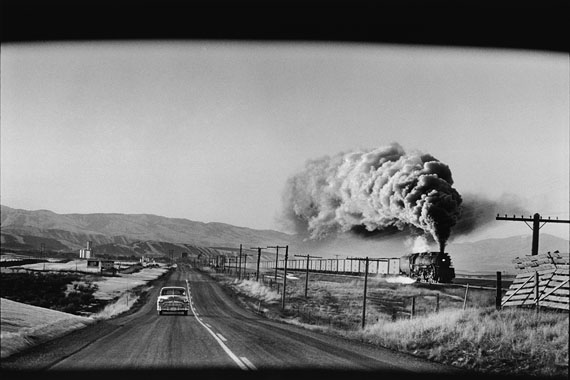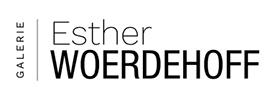
Wyoming, USA
1954
Gelatin silver print 40 x 50 cm
© Elliott Erwitt, courtesy Galerie Esther Woerdehoff
Drive in
Mario A. » Evgen Bavcar » René Burri » Chien-Chi Chang » Xavier Dauny » Elliott Erwitt » Daniel Frasnay » Leonard Freed » Andreas Fux » Claudia Imbert » Simone Kappeler » Xavier Lambours » Jason Langer » Inge Morath » Gérard Musy » Loan Nguyen » Sam Shaw » Louis Stettner » Peter Suschitzky » Arthur Tress » Burk Uzzle » Michael von Graffenried »
Exhibition: 1 Oct – 31 Oct 2014

Galerie Esther Woerdehoff
36 rue Falguière
75015 Paris
+33(0)9-51 51 24 50
galerie@ewgalerie.com
www.ewgalerie.com
Wed-Sat 12-19

Erie-See, 10.6.1981
1981
Ilfochrome color print 100 x 100 cm
Édition : 3/9
© Simone Kappeler, courtesy Galerie Esther Woerdehoff
"Drive in"
Exhibition: October 1st to October 31st, 2014
Opening reception : Wednesday, October 1st, 6 to 9 pm
Curated by Galerie Esther Woerdehoff, Drive-In is an exhibition about cars, showing the approach of this subject by numerous photographers, from the fifties to nowadays.
When Elliott Erwitt, during and after the depression era, photographed those rolling dreams with his candid sense of humor and irony, cars, especially the very large and imposing ones, were already a landmark in the American landscape. In the early fifties, when Swiss photographer Robert Frank, thanks to a Guggenheim fellowship grant, drove his car across America for two years, he had his family with him. The picture of his wife Mary and their two children, totally exhausted and half asleep in the car, is an iconic image in the history of photography. When René Burri travelled to Brazil to document the building of modern cities, one of his most stunning photographs, Sao Paulo 1960, is a view of the rush hour traffic on a busy street. Simone Kappeler, another Swiss photographer, drove through America in 1981, 30 years after her fellow countryman Robert Frank, and took pictures with her Hasselblad, a Polaroïd and cheap toy cameras like Diana. She saw America in color, influenced by American movies and photography Driving a Gran Torino through the West she shows her fascination for this country built around the car culture, so different from what she knew back in small Switzerland. For Jason Langer or Andreas Fux, cars are elements of a vintage and elegant vision of the city in their black and white pictures, whereas for Xavier Dauny their absence become a conceptual questioning of the landscape ...
Symbol of the American dream, of the rise of the middle class and of individualism through the whole XXth century, cars appear in a great amount of photographies. With the rise of Street Photography, cars were bound to peep out on most photos taken. Still cars are photographed not only as a transportation device through the packed streets of cities or in the great outdoors emptiness but also as a traveling place of intimacy in the public space, where people talk, eat, sleep, love, as in a ever moving home.
For photographers, cars are elements of decor, mechanical sculptures with their own modern esthetic, frames that echoes the camera’s viewfinder but also boxes where small scenes take place between people as in a moving theater. Cars ends up belonging to a cinematographic imaginary and become a subject for their own esthetic qualities of machines and the symbolic of speed, power and freedom they convey.�

Mercedes
2000
gelatin silver print 22 x 33,5 cm
© Evgen Bavcar, courtesy Galerie Esther Woerdehoff
"Drive in"
Exposition : du 1er au 31 octobre 2014
Vernissage : mercredi 1er octobre, de 18h à 21h
Imaginée par la Galerie Esther Woerdehoff, "Drive-In" est une exposition de photographies sur le thème de la voiture, montrant l’approche de ce sujet par une vingtaine d’artistes, des années cinquante à nos jours.
A l’époque de la grande dépression, les voitures, grandes et imposantes, sont déjà un symbole dans le paysage américain et Elliott Erwitt photographie ces rêves sur roues avec son sens de l’humour habituel, une certaine candeur et beaucoup d’ironie. Quand le photographe suisse Robert Frank, grâce à une bourse du Musée Guggenheim, conduit sa voiture à travers l’Amérique pendant deux ans au début des années 50, il voyage avec sa famille. L’image de sa femme Mary et de leurs deux enfants, totalement épuisés et à moitié endormis dans la voiture, est une image emblématique de l’histoire de la photographie. Lorsque René Burri se rend au Brésil pour documenter la construction des villes modernes, une de ses photographies les plus spectaculaires, Sao Paulo 1960, montre la circulation aux heures de pointe sur une rue très fréquentée. Simone Kappeler, une autre photographe suisse, voyage à travers l’Amérique en 1981, 30 ans après son compatriote Robert Frank. Elle prend des photos avec un Hasselblad, un Polaroïd et des appareils bon marché, comme le Diana. Elle voit l’Amérique en couleurs, influencée par les films et la photographie américaine. Traversant l’ouest au volant d’une Gran Torino, elle montre sa fascination pour ce pays construit autour d’une culture de la voiture, tellement éloigné de ce qu’elle connaissait en Suisse. Pour Jason Langer ou Andreas Fux, les voitures sont les éléments d’une vision vintage et élégante de la ville qui s’exprime dans leurs images en noir et blanc, tandis que pour Xavier Dauny leur absence amène un questionnement conceptuel à propos du paysage ...
Symbole du rêve américain, de l’évolution de la classe moyenne et de l’individualisme à travers tout le XXe siècle, la voiture apparait fréquemment dans les photographies. Avec l’apparition de la Street Photography, la voiture devient omniprésente. Photographiée non seulement comme un moyen de transport à travers les rues bondées des villes ou sur des routes désertiques, mais aussi comme refuge de l’intimité dans l’espace public, c’est un lieu fermé, où les gens parlent, mangent, dorment, s’aiment, comme dans une maison constamment mobile. Pour les photographes, les voitures sont des éléments du décor, des sculptures avec leur propre esthétique moderne, des fenêtres qui font écho au viseur de l’appareil photo, mais aussi des petits théâtres, constamment en mouvement.�

Chicago, Illinois, Etats-Unis, 1971
1971
tirage lambda 47 x 70 cm
© René Burri, courtesy Galerie Esther Woerdehoff

Marilyn Monroe et Henry Miller en voiture, New York City
1957
tirage argentique sur papier baryté, 33 x 50 cm
Édition : 29/30 © Sam Shaw, courtesy Galerie Esther Woerdehoff